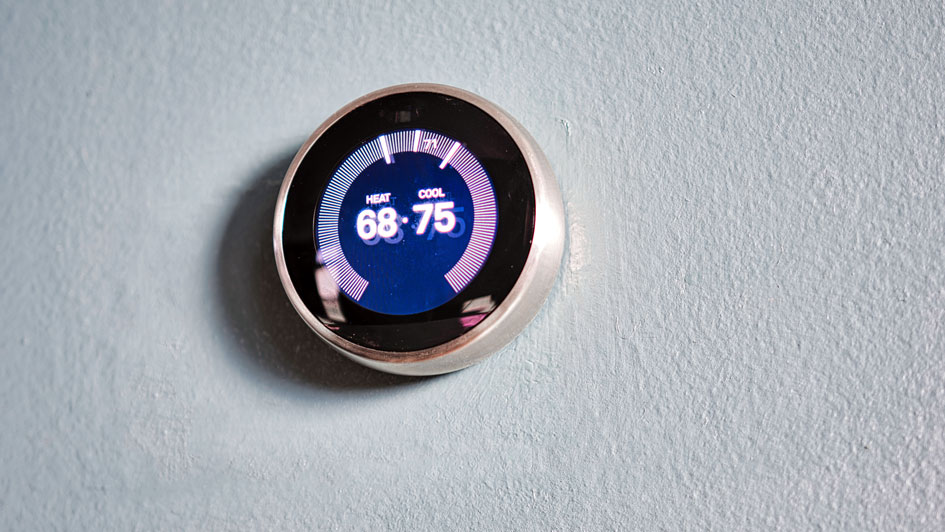
A Nest Thermostat is a great investment for keeping your home comfortable, regardless of the season or weather. With features designed around maximizing efficiency, convenience and comfort, a Nest Thermostat is an excellent choice to help you manage your energy use — lowering your monthly bills in the process.
That’s why more people are looking to add devices like a Nest to their HVAC system. If you're interested in trying a Nest yourself, call your nearest expert for smart thermostat installation in Fort Lauderdale.
With everything from automatic scheduling to energy efficiency monitoring, Nest makes home climate control effortless.
Curious to learn more? Take a look at 12 things you should know about your Nest Thermostat.
1. Resetting Your Nest Thermostat
The first thing to know about resetting a Google Nest Thermostat is that resetting is different from restarting.
- Restart: A common feature in consumer electronics, including your phone or computer, restarting your Nest Thermostat turns it off before starting it right back up again. This records your existing thermostat settings, ad can reapply them once you're done confirming if your Nest is frozen or not connecting to Wi-Fi.
- Reset: A more drastic function, a reset should restore your Nest to its original settings from the manufacturer. In most cases, people resort to a reset as they're moving into a new house and bringing the thermostat with them, or if they are moving out and want to erase all personal info from the Nest before leaving it for the next homeowner.
If you want to perform a reset, it helps to record existing temperature settings so reapplying them is faster. Next, find Settings -> Equipment and record your system wires, heating type and safety temperature settings.
After writing down this information, go to Settings, select Reset and press. You can choose from five options:
- Restart: Turns your Nest off before rebooting it with your settings. Another method is to press the outside of the Nest and hold it down for a few seconds until it goes black, at which point you can remove your hand.
- Schedule: This reset setting clears any info about your temperature schedule—including for your hot water, if you have that programmed into your Nest. By choosing this kind of reset, you’ll be given the chance to plan out a new schedule or wait while your Nest learns your schedule.
- Away: Choosing this reset option gets rid of any programming your Nest has picked up about how often you walk by, so that it can update the temperature on its own.
- Network: If you select this reset option, it forgets connection logins and your Nest will no longer be connected to Wi-Fi. It also forgets your Wi-Fi password.
- All Settings: This reset clears all your personal settings and learning.
2. How to Connect Nest Thermostat to Wi-Fi
A stable internet connection is important for making the most of your Nest's features.
To connect your Nest to the internet:
- Access the Quick View menu. This is done by turning the thermostat's outer ring.
- Select the Settings icon.
- Select Network.
- Once your Nest has scanned nearby networks, select your Wi-Fi and, if necessary, enter your password.
3. Does a Nest Thermostat Have a Battery and How Long Will the Battery Last?
Nest thermostats are powered indirectly through HVAC system, but they also include a rechargeable lithium-ion battery for backup power in case of an outage. According to Google, Nest's manufacturer, a Nest Thermostat battery will generally last several months. It can be recharged using a USB charger that comes with the Nest.
4. How to Turn Off a Nest Thermostat
If you aren’t going to be in your home for a long time, you can set your Nest Thermostat to Off mode, though Eco mode is another solid choice. The Off mode option deactivates your regular heating and cooling schedules, while maintaining existing Safety Temperatures to keep your home from getting particularly hot or cold.
To choose Off mode on the thermostat:
- Hold the touch bar until the display reads “Turn Off” and then slide the bar to highlight Turn Off, and then touch the bar to select.
- Or, from the main menu, go to Mode and select Off.
Off mode can even be accessed from your Google Home app:
- Select Thermostat from home screen
- Tap Temperature mode
- Select Off
5. Can Alexa Control a Nest Thermostat?
Yes, your Amazon Alexa can be used to control a Nest Thermostat. Alexa voice controls are also available with Nest doorbells and cameras. And of course, you can use Google Assistant to control your Nest.
6. Does a Nest Thermostat Function Without Wi-Fi?
The good news is that a Nest Thermostat can still control temperatures even without Wi-Fi. That being said, without Wi-Fi a Nest doesn’t have the ability to use the smart functions that most people enjoy.
7. Can You Lock a Nest Thermostat?
When family members can't stop bickering over temperatures, Nest offers a handy feature that keeps things simple.
Users can lock the Nest to prevent others from adjusting the settings or changing the temperature outside of a preset range. This doesn't mean you're stuck with a single temperature—a locked Nest continues to use existing program settings—but simply keeps these settings from being changed.
If you want to lock your Nest:
- Press the Settings icon, scroll to the bottom and find Lock.
- Enter a 4-digit pin number you can remember, and keep in mind this has to be entered twice.
- If locking in Heat or Cool mode, fine-tune your maximum and minimum temperature range before tapping Lock at the bottom of the screen.
When you're ready to unlock the Nest, open the settings and choose Unlock. Once you enter your 4-digit pin, your device will be unlocked.
8. How to Control a Nest Thermostat from a Phone
Nest thermostats can be controlled by your Google Home app, which is accessible on your phone or other smart device, including a computer. Other versions of Nest, including the Nest Thermostat E and Nest Learning Thermostat, can also be controlled remotely by the Nest app.
Before you can make adjustments for a Nest on your phone with Google Home or the Nest app, you need to follow a few steps:
- Download the Google Home app or, with premium Nest models, the Nest app to your phone.
- Plug in your Nest Thermostat.
- Access the Google Home app on your phone and follow the instructions to select your account, link to your new device and connect to Wi-Fi.
- Google offers a more in-depth setup tool, if you would like more assistance in connecting.
Once you’ve added your Nest to your Home app, you can find and adjust it by clicking Thermostat on the home screen. Once you do that, making adjustments is done by dragging your finger along the screen or tapping on a plus or minus sign.
The app also allows you to change the Nest's preset temperatures. From the home screen, select Thermostat and then select Settings. Once there, press Temperature Preferences and then Temperature Presets. The display will show your preferred Comfort, Eco and Sleep temperatures. By selecting one of those three options, you can change the temperature for that preset.
9. How to Set a Nest Thermostat Schedule
Your Nest allows you to schedule temperature programming either on the device or on the Google Home app. Newer and advanced models of the Nest, such as the Nest Thermostat E and Nest Learning Thermostat, can also be adjusted by using the Nest app.
You have two primary ways to establish a temperature schedule on a Nest Thermostat:
- Quick Schedule: Quick Schedules are based on the national average schedule for energy efficiency. When you are setting up your Nest, the Google Home app allows you to change the temperature with a schedule. When choosing this option, it displays a preset schedule and allows you to make changes. After you've made all your choices, that’s the schedule it uses.
- Temperature Presets: To change the temperature presets on your Nest, open the Google Home app and select Thermostat. Then, tap Presets and choose Edit. As soon as you're finished making updates, select Done.
To make tweaks or changes to your current schedule, open the Google Home app, select Thermostat and then tap on Schedules. You can then pick the day of the week that you want to add a temperature. Once you pick the day, tap Add and select the preset you want. Finally, select Time before touching and dragging the numbers to change the time. The changes won't save unless you select Done.
10. How to Set a Temperature Range on a Nest Thermostat
You can set a temperature range on a Nest Thermostat in the Eco mode. A key part of this feature is the Nest's ability to adjust the temperature based on whether it detects you at home or not.
To customize the Nest temperature range in Eco mode, go to Settings and select Eco. That should display the current “Heat to” and “Cool to” temperature settings. You can select each and adjust them to your desired temperature. When complete, select Done.
11. What to Do if a Nest Thermostat Is Not Compatible
Nest thermostats are compatible with most heating and cooling systems. The maker of Nest, Google, has an online compatibility checker that asks a series of questions about your location and existing setup to see which Nest model works with your system.
If you don't think your Nest is compatible with your system, it’s best to reach out to a professional for smart thermostat installation in Fort Lauderdale. Technicians with the proper experience can assess your system and, if your Nest is compatible, install it quick so you can jump right into the savings and convenience.
12. How Do I Manually Control My Nest Thermostat?
Nest Thermostats come with many features designed to improve comfort while keeping costs low. However, you have the ability to turn off the smart features if you prefer manual controls similar to normal thermostats.
Take into account, by doing this you clear all your temperature schedules and letting the Nest work like any other thermostat—it will display the temperature and let you change the temperature, but that’s about it.
Setting your thermostat to manual controls can be accomplished with the following steps:
- Auto-Schedule: From the main screen, go to Settings and then scroll to Nest Sense. Go to Auto-Schedule, select No and click Done.
- Eco: From the main screen, go to Settings, scroll to Eco. Once in Eco, select Off for both the current Heat to and Cool to temperatures, and select Done.
- Home/Away Assist: From the main screen, go to Settings and select Home/Away Assist. Then, select Stop Using and click Done.
- Reset: After you've cleared the settings, reset your nest. From the main screen, go to Settings and select Reset, highlight Schedule and then select Reset to clear out any saved scheduling data.



